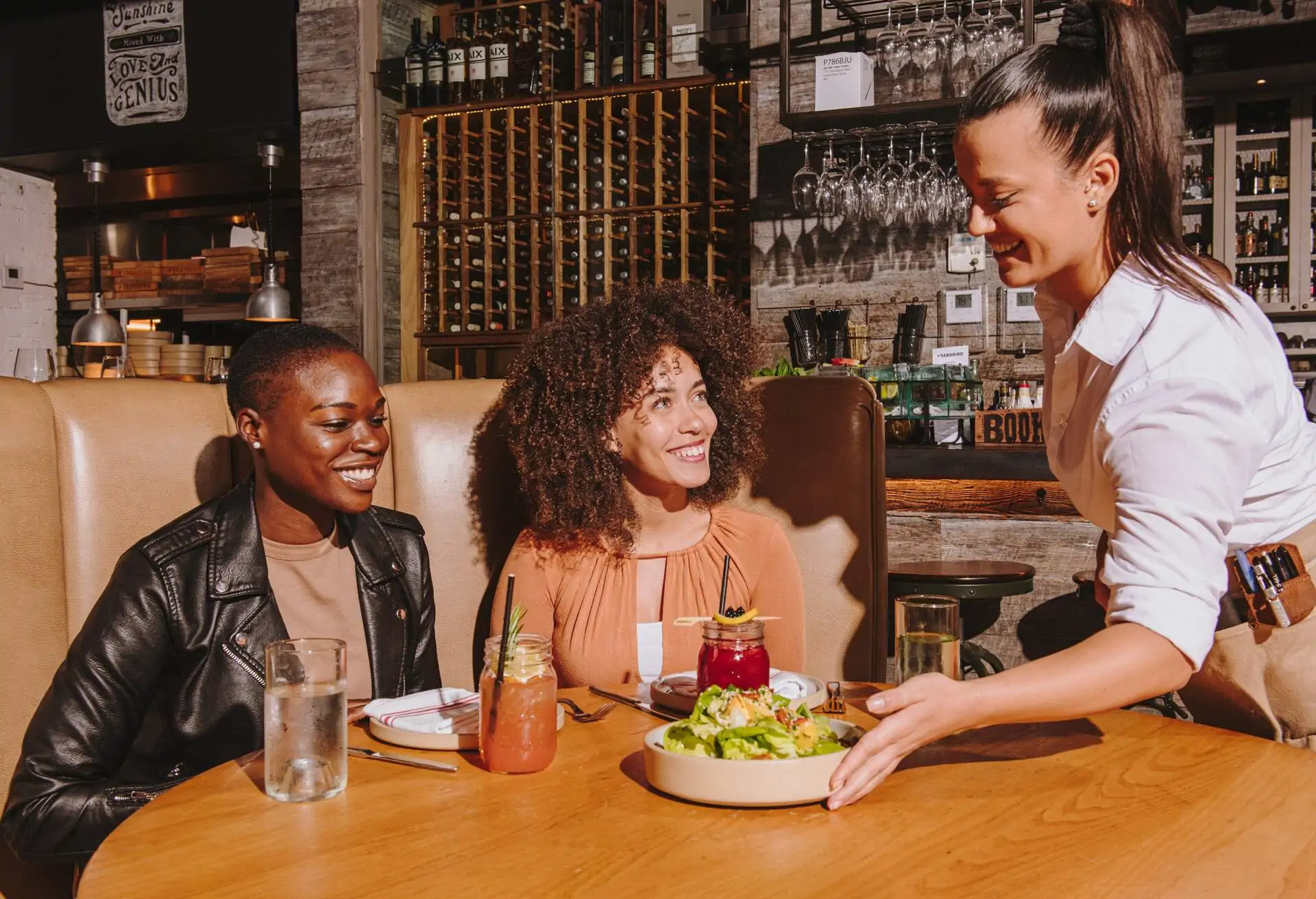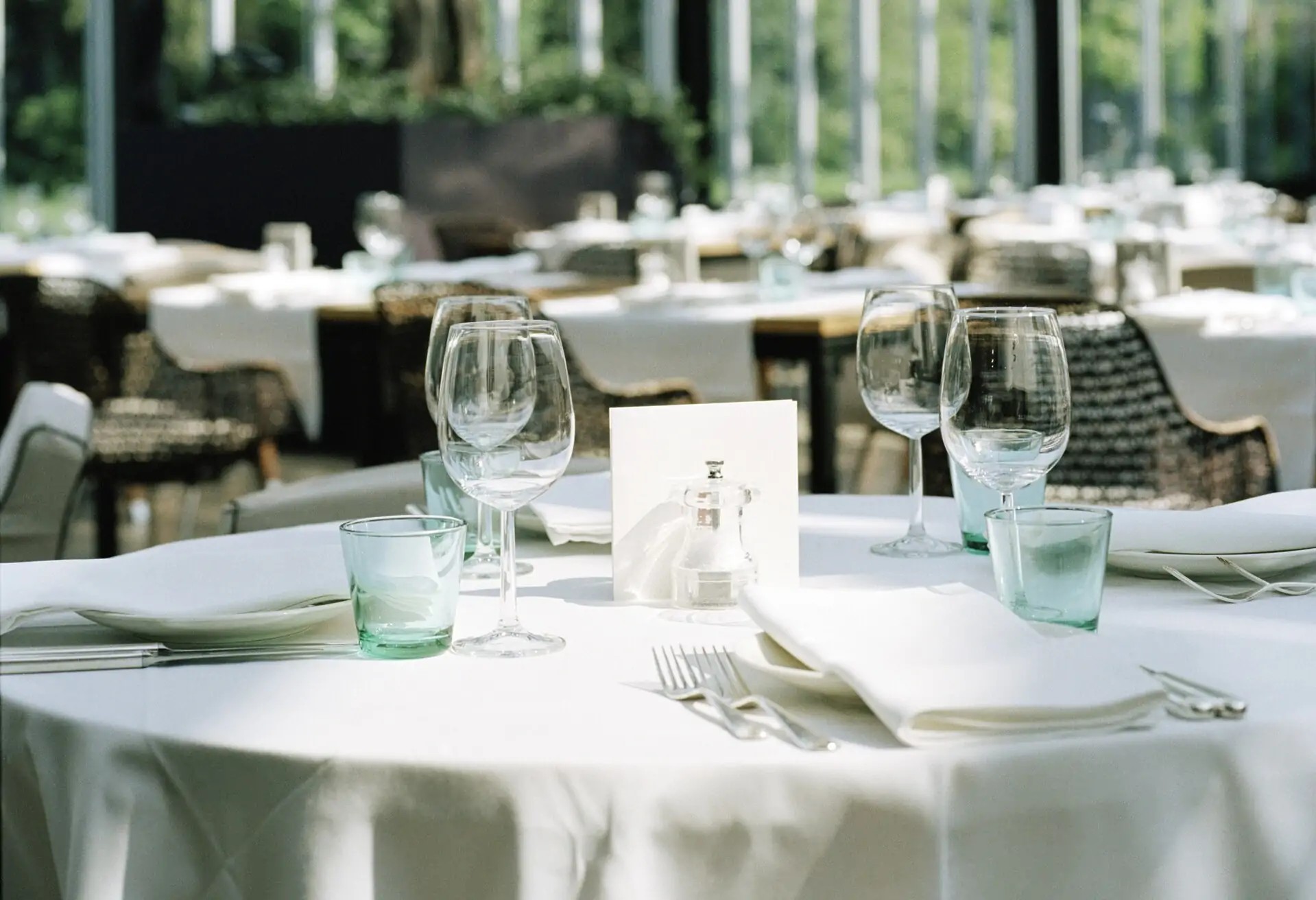Getting the best out of your seating arrangements is a delicate balancing act. On the one hand, you have reservations, the lifeblood of many restaurants that provide a sense of security and allow for better planning. On the other, there are walk-in guests, spontaneous diners who can fill unexpected gaps and boost revenue.
Striking the right balance means you can create a restaurant seating strategy that gives you the best of both worlds: reservations and walk-ins. With that in mind, look at how you can effectively manage reservations alongside walk-ins without worrying about overbookings.
Where reservations shine
Reservations help you plan and prepare with more confidence. When you know who’s coming and when, you can make smarter decisions about everything from staffing to food prep. Your kitchen team can work more efficiently with prep lists, while your front-of-house staff can provide more attentive service since they know what to expect.
Having a reliable reservation system is a huge draw for guests as well as your team. There’s something incredibly reassuring about knowing a table is waiting for you, especially for those special occasions or important business meals. When guests have this kind of certainty, they’re more satisfied with their experience and are more likely to become regulars who keep coming back.
The predictability of reservations also helps manage your inventory better. Instead of guessing how many guests might walk through your door, you can make informed decisions about ordering and prep work, cutting down on waste while ensuring you’re ready for every service.
The benefits of walk-ins
Having a great reservation strategy doesn’t mean you should ignore walk-ins. Diners coming in off the street bring an energetic spontaneity to your restaurant while helping you maximize every available seat.
These guests can transform what might have been empty tables into profitable opportunities, especially during unexpected rushes or when you have last-minute cancellations. Walk-ins also help create that coveted buzz of a busy, vibrant dining room that draws in even more guests.
Plus, they’re often locals or tourists exploring the area. These guests are the kind who might stumble upon your restaurant, fall in love with it, and become loyal regulars who spread the word about their great find.
The challenges of reservation and walk-ins
While reservations and walk-ins are central to restaurants running successfully, each approach comes with its own set of distinct challenges that need navigating.
Reservations
No-shows and late arrivals can leave tables sitting empty during peak times, while rigid booking systems might force you to turn away eager walk-in guests. There’s also the pressure of handling multiple reservation arrivals at once, which can overwhelm your staff and impact service quality if you’re not prepared. .
Walk-ins
Unpredictable guest flow makes it tough to plan staffing and prep work effectively, while long wait times during busy periods can lead to frustrated guests and negative reviews. Managing walk-in expectations while maintaining service quality becomes especially challenging during peak hours.

Striking the right balance between reservations and walk-in
Achieving a successful restaurant seating strategy lies in finding the sweet spot between reservations and walk-ins.
1) Put a smart table management system in place
Start by putting a smart table management system in place that adapts in real time to your restaurant’s needs. Look for features like:
- Dynamic table assignments help with automatically adjusting table configurations based on party size and current occupancy.
- Waitlist management to manage walk-in guests and provide accurate wait time estimates.
- No-show predictions that use historical data to anticipate and mitigate the impact of no-shows.
2) Set aside tables for walk-ins
You should also designate a portion of your seating capacity for walk-in guests, especially during peak hours. Taking this approach means you can accommodate spontaneous diners without compromising your reservation commitments. The exact percentage will depend on your restaurant’s unique characteristics, but starting with 20-30% of your tables for walk-ins is a good baseline.
3) Time-based seating strategies
Use time-based seating strategies to implement a time-slot system for reservations that better manages your seating flow:
- Staggered reservation times: Space out reservation start times to avoid overwhelming your kitchen and service staff.
- Limited seating windows: Offer specific time slots (e.g., 6:00 PM, 7:30 PM, 9:00 PM) to create a more predictable guest flow.
- Communicate time limits: Be clear and inform guests about any time restrictions on their table, especially during peak hours.
4) Put technology front and center
It almost goes without saying, but using technology to manage your restaurant’s reservations and seating strategy will give you better insights and make everything all the more seamless in real time. Use a reservation system that offers:
- SMS notifications: Send automated texts to guests when their table is ready or if there are any changes to their reservation.
- Online waitlist: Allow walk-in guests to join a digital queue, reducing crowding in your waiting area and providing more accurate wait times.
- Table status tracking: Use technology to monitor table status in real time, helping hosts make informed decisions about seating walk-ins.
5) Train your staff on flexible seating strategies
If your front-of-house team has the skills and authority to make smart seating decisions, they’ll be better prepared to avoid potential mixups. They’ll also be well equipped to make changes on the fly.
- Cross-training: See to it that hosts understand the kitchen’s capacity and current workload so they can make informed seating choices.
- Empowerment: Give staff the flexibility to make on-the-spot decisions about accommodating walk-ins or adjusting reservation times.
- Communication skills: Train team members to manage guest expectations, especially during busy periods.
6) Create a no-show and late arrival policy
Implementing and enforcing fair policies means you can reduce lost revenue and maintain a smoother dining service flow. Creating a consistent approach to handling these situations not only protects your restaurant’s interests but also sets clear expectations for guests. Consider the following strategies:
- Confirmation system: Use automated email or SMS reminders to reduce no-show rates.
- Grace period: Set a reasonable time limit (e.g., 15 minutes) for holding reserved tables.
- Deposits for large parties: Consider taking deposits for larger groups or during high-demand periods to discourage no-shows.
7) Optimize your floor plan
A well-planned floor plan improves your ability to balance different types of guests while maximizing your seating capacity. With a versatile space, you can adapt to varying demands throughout service. Look to implement these layout strategies:
- Flexible seating arrangements: Use modular furniture that can be easily reconfigured to accommodate different party sizes.
- Strategic table placement: Position smaller tables near the entrance for quick seating of walk-in couples or small groups.
- Bar seating: Use bar space for walk-in guests or as a waiting area for those with reservations.
8) Analyze and adjust regularly
Regularly reviewing and acting on insights from your system helps you make informed decisions about seating allocations, staffing, and overall strategy. Here’s how to put your data to work:
- Review peak times: Identify your busiest periods and adjust your reservation-to-walk-in ratio accordingly.
- Track turn times: Monitor how long guests typically stay and use this information to optimize your seating schedule.
- Assess profitability: Compare the revenue generated by reservations versus walk-ins to inform your seating allocation.
9) Create a waitlist strategy
A well-organized waitlist strategy can turn potentially frustrating waits into positive guest experiences. Look to implement a clear, fair system and use technology so you can keep guests engaged and informed while boosting your seating efficiency. Here are some key elements to consider for your waitlist management:
- Accurate wait times: Use historical data and real-time table tracking to provide guests with realistic wait time estimates.
- Alternative options: Offer waiting guests the option to dine at the bar or order appetizers while they wait.
- Priority system: Consider giving priority to guests who’ve waited the longest, regardless of party size, to ensure fairness.
10) Turn slow periods into wins
Slow periods don’t have to mean lost revenue. With creative strategies and smart resource allocation, you can turn traditionally quiet hours into profitable opportunities. Attracting guests during off-peak times means you can create a more consistent flow of business throughout the day or week. Consider these approaches to maximize your slower periods:
- Off-peak promotions: Offer special deals or events during slower periods to attract more walk-in traffic.
- Reservation incentives: Encourage reservations during typically slow times by offering exclusive menu items or discounts.
- Flexible staffing: Adjust your staffing levels to accommodate varying levels of business throughout the day or week.
Overcoming common challenges
Even with a solid strategy in place, you may encounter some hurdles. For example, you might find yourself overbooked. In this scenario, be proactive. Contact guests with the latest reservations and offer them incentives (like a free appetizer or drink) to shift their booking to a less busy time.
There may also be times where you underestimate walk-in traffic. If this happens, gradually increase the number of tables set aside for them. Monitor the impact on your reservations and adjust as needed.
When it comes to balancing different dining speeds, use your table management system to track average dining times for different types of reservations (e.g., business lunches vs. celebratory dinners) and factor this into your seating strategy.
The most important factor is managing guest expectations. Clearly communicate your policies on your website, during the reservation process, and when guests arrive. Train staff to handle difficult situations with empathy and offer solutions when possible.
Finding the right balance
Balancing reservations and walk-ins is an ongoing process that requires attention, flexibility, and the right tools. Implement a smart table management system, train your staff effectively, and regularly analyze your data. It will mean you can create a seating strategy that helps your restaurant realize its potential while providing an excellent dining experience for all guests.
At the end of the day, the goal isn’t just to fill seats but to create a smooth, enjoyable experience for both your guests and your staff. With the right approach, you can turn the challenge of managing reservations and walk-ins into an opportunity to showcase your restaurant’s efficiency and hospitality.




